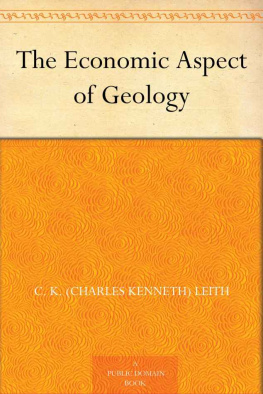THE GEOGRAPHY OF ITALY
Italy, ribbed by the Apennines, girdled by the Alps and the sea, juts out like a long pier-head from Europe towards the northern coast of Africa. It includes two regions of widely differing physical characteristics: the northern, continental; the southern, peninsular. The peninsula is slightly larger than the continental portion: together their area is about 91,200 square miles.
Continental Italy. The continental portion of Italy consists of the southern watershed of the Alps and the northern watershed of the Apennines, with the intervening lowland plain, drained, for the most part, by the river Po and its numerous tributaries. On the north, the Alps extend in an irregular crescent of over 1200 miles from the Mediterranean to the Adriatic. They rise abruptly on the Italian side, but their northern slope is gradual, with easy passes leading over the divide to the southern plain. Thus they invite rather than deter immigration from central Europe. East and west continental Italy measures around 320 miles; its width from north to south does not exceed seventy miles.
The peninsula. The southern portion of Italy consists of a long, narrow peninsula, running northwest and southeast between the Mediterranean and Adriatic seas, and terminating in two promontories, which form the toe and heel of the Italian boot. The length of the peninsula is 650 miles; its breadth is nowhere more than 125 miles. In striking contrast to the plains of the Po, southern Italy is traversed throughout by the parallel ridges of the Apennines, which give it an endless diversity of hill and valley. The average height of these mountains, which form a sort of vertebrate system for the peninsula ( Apennino dorso Italia dividitur , Livy xxxvi, 15), is about 4,000 feet, and even their highest peaks (9,500 feet) are [pg 4] below the line of perpetual snow. The Apennine chain is highest on its eastern side where it approaches closely to the Adriatic, leaving only a narrow strip of coast land, intersected by numerous short mountain torrents. On the west the mountains are lower and recede further from the sea, leaving the wide lowland areas of Etruria, Latium and Campania. On this side, too, are rivers of considerable length, navigable for small craft; the Volturnus and Liris, the Tiber and the Arno, whose valleys link the coast with the highlands of the interior.
The coast-line . In comparison with Greece, Italy presents a striking regularity of coast-line. Throughout its length of over 2000 miles it has remarkably few deep bays or good harbors, and these few are almost all on the southern and western shores. Thus the character of the Mediterranean coast of Italy, with its fertile lowlands, its rivers, its harbors, and its general southerly aspect, rendered it more inviting and accessible to approach from the sea than the eastern coast, and determined its leadership in the cultural and material advancement of the peninsula.
Climate. The climate of Italy as a whole, like that of other Mediterranean lands, is characterized by a high average temperature, and an absence of extremes of heat or cold. Nevertheless, it varies greatly in different localities, according to their northern or southern situation, their elevation, and their proximity to the sea. In the Po valley there is a close approach to the continental climate of central Europe, with a marked difference between summer and winter temperatures and clearly marked transitional periods of spring and autumn. On the other hand, in the south of the peninsula the climate becomes more tropical, with its periods of winter rain and summer drought, and a rapid transition between the moist and the dry seasons.
Malaria. Both in antiquity and in modern times the disease from which Italy has suffered most has been the dreaded malaria. The explanation is to be found in the presence of extensive marshy areas in the river valleys and along the coast. The ravages of this disease have varied according as the progress of civilization has brought about the cultivation and drainage of the affected areas or its decline has wrought the undoing of this beneficial work.
Forests. In striking contrast to their present baldness, the slopes of the Apennines were once heavily wooded, and the well-tilled [pg 5] fields of the Po valley were also covered with tall forests. Timber for houses and ships was to be had in abundance, and as late as the time of Augustus Italy was held to be a well-forested country.
Minerals. The mineral wealth of Italy has never been very great at any time. In antiquity the most important deposits were the iron ores of the island of Elba, and the copper mines of Etruria and Liguria. For a time, the gold washings in the valleys of the Graian Alps were worked with profit.
Agriculture. The true wealth of Italy lay in the richness of her soil, which generously repaid the labor of agriculturist or horticulturist. The lowland areas yielded large crops of grain of all sortsmillet, maize, wheat, oats and barleywhile legumes were raised in abundance everywhere. Campania was especially fertile and is reported to have yielded three successive crops annually. The vine and the olive flourished, and their cultivation eventually became even more profitable than the raising of grain.
The valleys and mountain sides afforded excellent pasturage at all seasons, and the raising of cattle and sheep ranked next in importance to agricultural pursuits among the countrys industries.
The islands : Sicily, Sardinia, Corsica. The geographical location of the three large islands, Sicily, Sardinia and Corsica, links their history closely with that of the Italian peninsula. The large triangle of Sicily (11,290 sq. mi.) is separated from the southwest extremity of Italy by the narrow straits of Rhegium, and lies like a stepping-stone between Europe and Africa. Its situation, and the richness of its soil, which caused it to become one of the granaries of Rome, made it of far greater historical importance than the other two islands. Sardinia (9,400 sq. mi.) and Corsica (3,376 sq. mi.), owing to their rugged, mountainous character and their greater remoteness from the coast of Italy, have been always, from both the economic and the cultural standpoint, far behind the more favored Sicily.
The historical significance of Italys configuration and location. The configuration of the Italian peninsula, long, narrow, and traversed by mountain ridges, hindered rather than helped its political unification. Yet the Apennine chain, running parallel to the length of the peninsula, offered no such serious barriers to that unification as did the network of mountains and the long inlets that intersect the peninsula of Greece. And when once Italy had been welded [pg 6] into a single state by the power of Rome, its central position greatly facilitated the extension of the Roman dominion over the whole Mediterranean basin.
The name Italia. The name Italy is the ancient Italia , derived from the people known as the Itali , whose name had its origin in the word vitulus (calf). It was applied by the Greeks as early as the fifth century B. C. to the southwestern extremity of the peninsula, adjacent to the island of Sicily. It rapidly acquired a much wider significance, until, from the opening of the second century, Italia in a geographical sense denoted the whole country as far north as the Alps. Politically, as we shall see, the name for a long time had a much more restricted significance.













